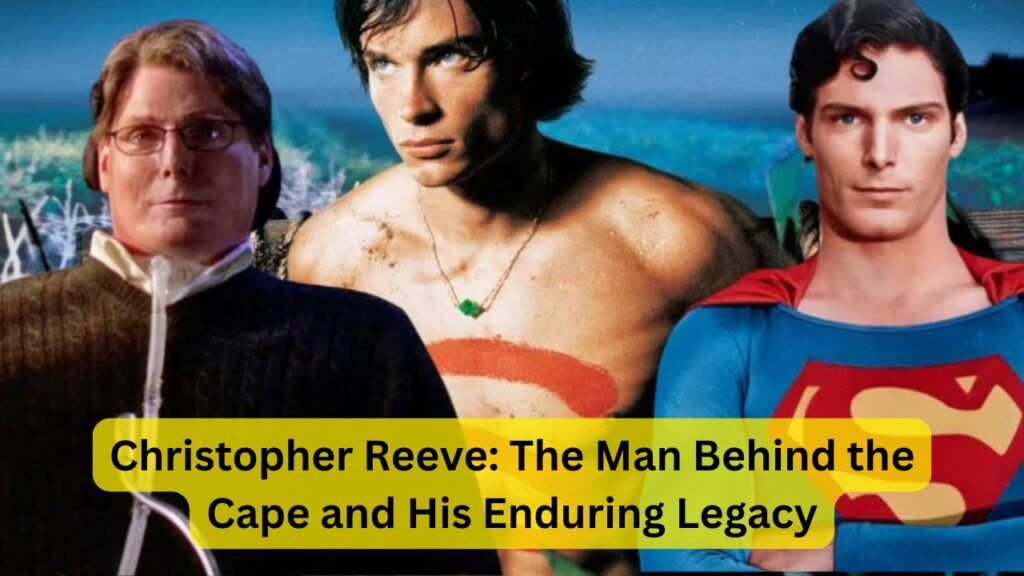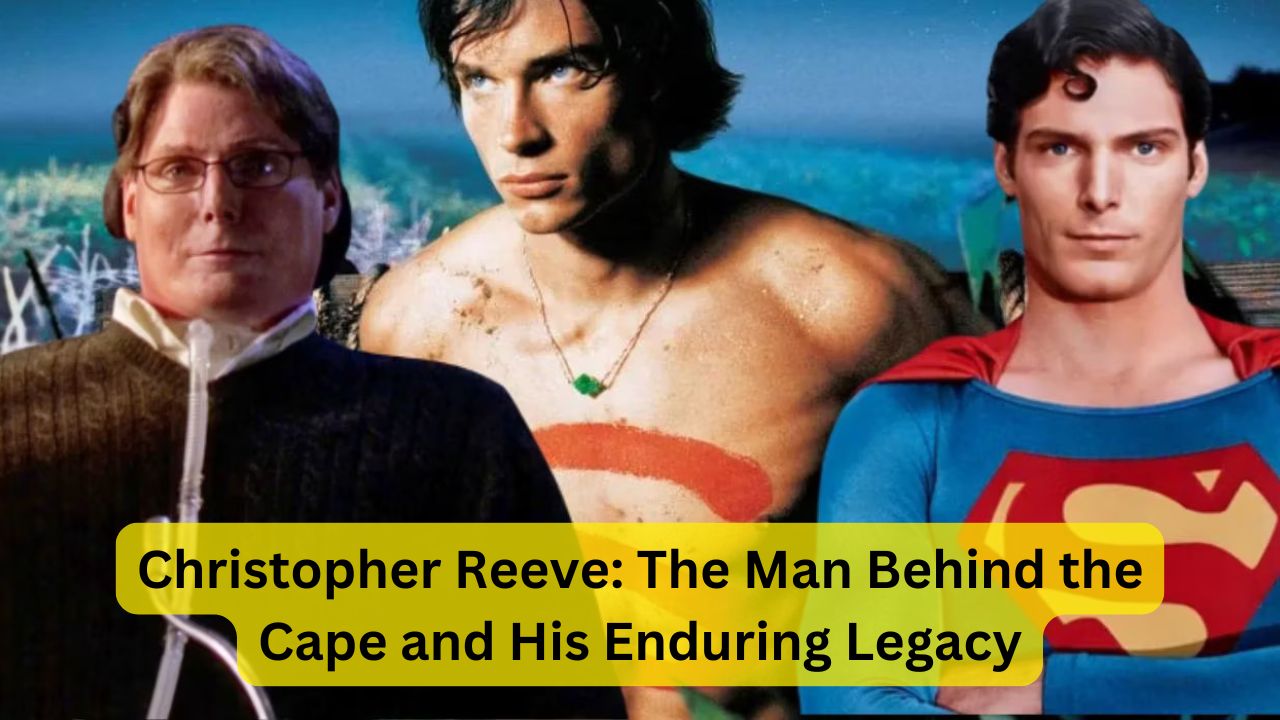
Christopher Reeve is a name synonymous with heroism, not just on the silver screen but in real life as well. Best known for his iconic role as Superman in the late 1970s and 1980s, Reeve’s life took a dramatic turn when a horseback riding accident in 1995 left him paralyzed from the neck down. Despite this, he became a powerful advocate for spinal cord injury research and disability rights, leaving a legacy that extends far beyond his acting career. In this article, we will explore the life, career, and lasting impact of Christopher Reeve.
Early Life and Career Beginnings
Christopher Reeve was born on September 25, 1952, in New York City. From an early age, he showed a passion for the arts, particularly theater. Reeve attended Princeton Day School, where he honed his acting skills, later studying at Cornell University and the prestigious Juilliard School in New York. His time at Juilliard was particularly formative, where he trained under the legendary actor and teacher John Houseman.
The Role of a Lifetime: Superman
In 1978, Christopher Reeve was cast as Superman, a role that would define his career. His portrayal of the Man of Steel in Richard Donner’s “Superman: The Movie” was met with critical acclaim and turned him into an international superstar. Reeve’s ability to capture the duality of the character—both the invincible hero and the mild-mannered Clark Kent—made his performance unforgettable.
Reeve reprised the role in three sequels, cementing his place in Hollywood history. His portrayal of Superman remains the definitive version for many fans, embodying the hope, strength, and moral integrity that the character represents.
Life-Altering Accident and Resilience
Christopher Reeve’s life changed dramatically on May 27, 1995, when he was thrown from his horse during an equestrian competition in Virginia. The accident left him paralyzed from the neck down, requiring a ventilator to breathe. Despite this devastating injury, Reeve refused to let it define him. Instead, he became a beacon of hope and resilience for millions around the world.
In the aftermath of the accident, Reeve committed himself to a new mission: advocating for spinal cord injury research and improving the quality of life for people with disabilities. His courage and determination were evident in his relentless pursuit of a cure and his advocacy for better medical care and support for those living with similar injuries.
Advocacy and the Christopher Reeve Foundation
In 1999, Christopher Reeve and his wife, Dana Reeve, established the Christopher & Dana Reeve Foundation, dedicated to advancing research on spinal cord injuries and improving the lives of those affected by them. The foundation has raised millions of dollars for research, funded groundbreaking studies, and provided support to countless individuals and families dealing with paralysis.
Reeve’s advocacy extended beyond the foundation. He lobbied Congress, met with world leaders, and used his public platform to raise awareness about the challenges faced by people with disabilities. His work led to increased funding for spinal cord research and brought hope to those who believed that a cure was possible.
The Power of Hope: Reeve’s Message to the World
One of the most powerful aspects of Christopher Reeve’s legacy is his message of hope. He famously said, “So many of our dreams at first seem impossible, then they seem improbable, and then, when we summon the will, they soon become inevitable.” This quote encapsulates Reeve’s belief in the power of human determination and the importance of never giving up, no matter the odds.
Reeve’s journey from actor to advocate showed that true heroism lies not in physical strength, but in the strength of the human spirit. His story inspired countless individuals to overcome their challenges and to believe in the possibility of a better future.
Return to the Screen and Continued Influence
Even after his accident, Reeve continued to pursue his passion for storytelling. He returned to the screen in the 1998 remake of “Rear Window,” for which he received critical acclaim. Additionally, he directed the film “In the Gloaming” in 1997, showcasing his talents behind the camera. These projects demonstrated Reeve’s undiminished creativity and his determination to continue contributing to the arts, despite his physical limitations.
Legacy and Lasting Impact
Christopher Reeve passed away on October 10, 2004, but his legacy lives on. The Christopher & Dana Reeve Foundation continues to be a leading force in spinal cord injury research and advocacy. Reeve’s story remains a testament to the power of resilience, the importance of advocacy, and the enduring impact one person can have on the world.
Reeve’s portrayal of Superman will forever be cherished, but it is his real-life heroism that has left the most profound mark. His work has inspired new generations of researchers, advocates, and individuals facing adversity, proving that even in the face of unimaginable challenges, there is always hope.
Conclusion
Christopher Reeve’s life was one of extraordinary highs and devastating lows, but through it all, he remained a symbol of hope and courage. From his iconic role as Superman to his tireless advocacy for spinal cord injury research, Reeve’s legacy is one of inspiration and determination. His story reminds us that true heroism is not about invulnerability, but about the strength to rise above adversity and fight for a better world.
